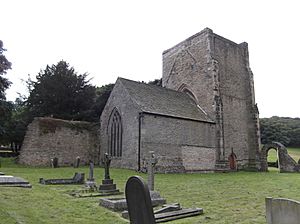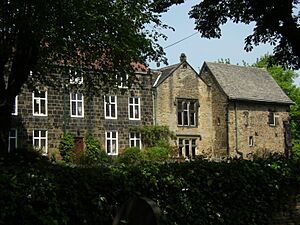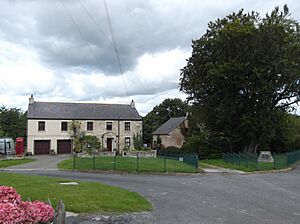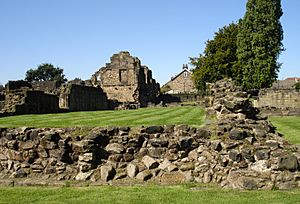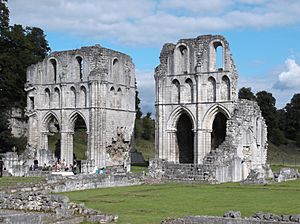List of monastic houses in South Yorkshire facts for kids
Imagine a long time ago, in places like South Yorkshire, there were special buildings where groups of religious people lived and worked. These places were called monastic houses. They were homes for monks, nuns, or friars who dedicated their lives to prayer, study, and helping their communities. They often had churches, living areas, and farms.
In England, many of these houses were closed down in the 1500s during a time called the Dissolution of the Monasteries. This list tells you about the monastic houses that once existed in South Yorkshire.
Contents
Monastic Houses of South Yorkshire
Beauchief Abbey
Beauchief Abbey was home to Premonstratensian canons, a type of religious community. It was founded between 1173 and 1176 by Robert fitz Ranulph. The canons came from Welbeck Abbey in Nottinghamshire. The abbey was dedicated to the Blessed Virgin Mary and Saint Thomas of Canterbury. It closed on February 4, 1537. Today, some of its old buildings are part of the local parish church.
Doncaster Friaries
Doncaster had two important friaries, which were homes for friars (religious men who often lived among people, not just in isolated monasteries).
Doncaster Greyfriars
This house was for Franciscan Friars Minor, also known as Greyfriars because of their grey robes. It was founded before 1284. This friary closed on November 20, 1538.
Doncaster Whitefriars
Doncaster Whitefriars was home to Carmelite Friars, who wore white robes. It was founded in 1351. John of Gaunt, a famous historical figure, was later seen as one of its founders. This friary closed on November 13, 1538.
Dunscroft Grange
Dunscroft Grange was likely a farm or estate belonging to Cistercian monks. It was probably connected to Roche Abbey. It was founded after 1186 and likely closed around June 25, 1538, at the same time as Roche Abbey.
Ecclesfield Priory
Ecclesfield Priory was a home for Benedictine monks. It was an "alien house," meaning it was a small branch of a larger monastery in France, specifically St-Wandrille. The church here was given to the monks by Richard de Lovetot. The priory closed in 1356. Its remains were later used in a house built on the site in 1736.
Hampole Priory
Hampole Priory was first home to Benedictine nuns, founded before 1156 by William de Clarefai and his wife Avicia de Tany. By the 13th century, it became a house for Cistercian nuns. The priory was dedicated to Saint Mary. It closed in 1539.
Monk Bretton Priory
Monk Bretton Priory started as a home for Cluniac monks, who were connected to Pontefract Priory. It was founded between 1153 and 1155 by Adam fitz Suan. Later, around 1279, it became independent and switched to being a house for Benedictine monks. The priory was dedicated to Saint Mary Magdalene of Lund. It closed on November 21, 1539. Today, its ruins are cared for by English Heritage.
Roche Abbey
Roche Abbey was a significant home for Cistercian monks. It was founded on July 30, 1147, by Richard de Builli and Richard fitz Turgis. The monks came from Newminster in Northumberland. The abbey was dedicated to Saint Mary. It closed on June 23, 1538. Its remains are now part of the beautiful grounds of Sandbeck Park. The famous landscape designer Capability Brown worked on the area in 1774. Today, it is also cared for by English Heritage.
Tickhill Friaries
Tickhill Austin Friars
Tickhill Austin Friars was home to Augustinian Friars. It was founded around 1260 by John Clarell. This friary closed on November 19, 1538. Some of its old buildings were later used to build houses called 'The Friars' around 1663.
Tickhill Cell(?)
There is some discussion about a possible Cluniac monks cell in Tickhill. A "cell" is a small monastery dependent on a larger one. However, there isn't much evidence to confirm this. If it existed, it would have been founded before 1415 and closed after 1504.
Tickhill Trinitarians(?)
A mention of "Trinitarians" in Tickhill likely refers to the Austin Friary, as there isn't clear evidence of a separate Trinitarian house here.
See also


